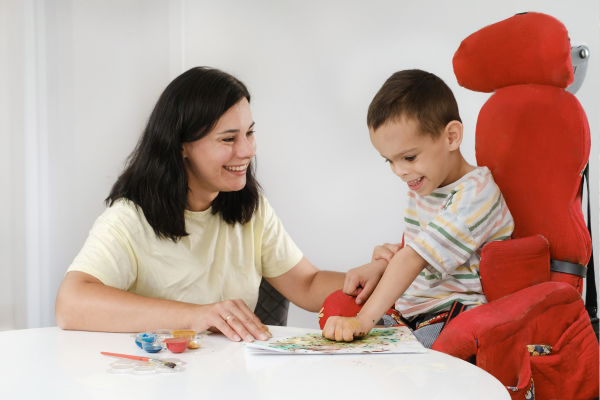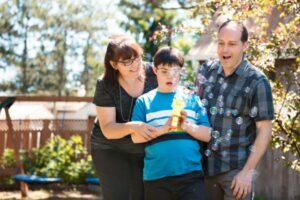Sensory Processing Disorder
Sensory processing disorder (SPD) is a condition that affects how the brain processes and organizes sensory information. Children with SPD may have difficulty with things like noise, touch, and movement.
Homeschooling can be a great option for children with SPD, as it allows parents to create a customized learning environment that meets their child’s individual needs. However, homeschooling a child with SPD can also be challenging.
In this article, we will discuss how to homeschool your child with SPD. We will cover topics such as creating a sensory-friendly learning environment, choosing a curriculum, and teaching your child self-regulation skills.
Creating a Sensory-Friendly Learning Environment
One of the most important things you can do when homeschooling a child with SPD is to create a sensory-friendly learning environment. This means creating a space that is quiet, well-lit, and free of clutter. It is also important to provide your child with opportunities to move around and to fidget.
Here are a few tips for creating a sensory-friendly learning environment:
- Choose a quiet place to learn. Avoid noisy areas such as the kitchen or living room.
- Make sure the learning space is well-lit. Natural light is best, but if you are homeschooling at night, use good artificial lighting.
- Keep the learning space clutter-free. This will help your child to focus and avoid distractions.
- Provide your child with opportunities to move around. Allow your child to stand up or take breaks to move around the room. You can also provide them with a fidget toy to help them focus.
Choosing a Curriculum
When choosing a curriculum for your child with SPD, it is important to consider their individual needs. Some children with SPD may do best with a structured curriculum, while others may do better with a more flexible curriculum.
It is also important to choose a curriculum that is appropriate for your child’s learning style. Some children with SPD may learn best visually, while others may learn best auditorily.
Teaching Your Child Self-Regulation Skills
Self-regulation is the ability to manage one’s emotions and behavior. Children with SPD often have difficulty with self-regulation.
Here are a few tips for teaching your child self-regulation skills:
- Help your child to identify their triggers. What are the things that make your child feel overwhelmed or upset? Once you know their triggers, you can help them to develop strategies for coping.
- Teach your child relaxation techniques. Deep breathing and progressive muscle relaxation are two effective relaxation techniques.
- Provide your child with opportunities to practice self-regulation. For example, you can have them take breaks when they start to feel overwhelmed. You can also praise them when they are able to successfully self-regulate.
Resources for Homeschooling Children With SPD
There are a number of resources available to help you homeschool your child with SPD. Here are a few:
- Homeschooling organizations. There are a number of homeschooling organizations that offer support and resources for homeschoolers with special needs.
- Online communities. There are a number of online communities for homeschoolers with special needs. These communities can be a great place to connect with other homeschoolers and to get support and advice.
- Books and articles. There are a number of books and articles available on homeschooling children with special needs. These resources can provide you with information and tips on how to homeschool your child successfully.
Conclusion
Homeschooling a child with SPD can be challenging, but it is also rewarding. By following the tips in this article, you can create a successful homeschooling experience for your child.






Be First to Comment